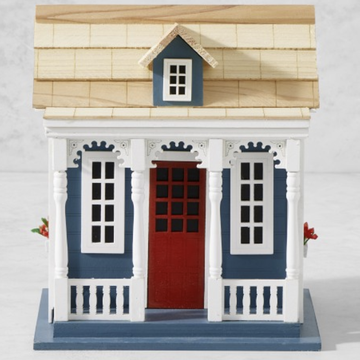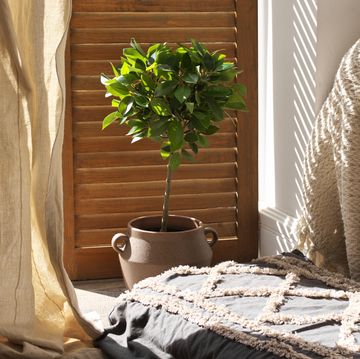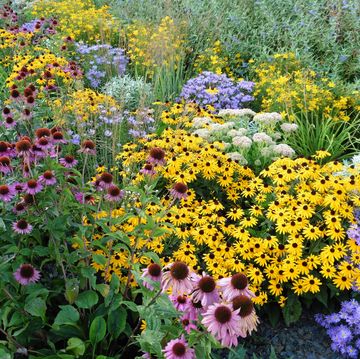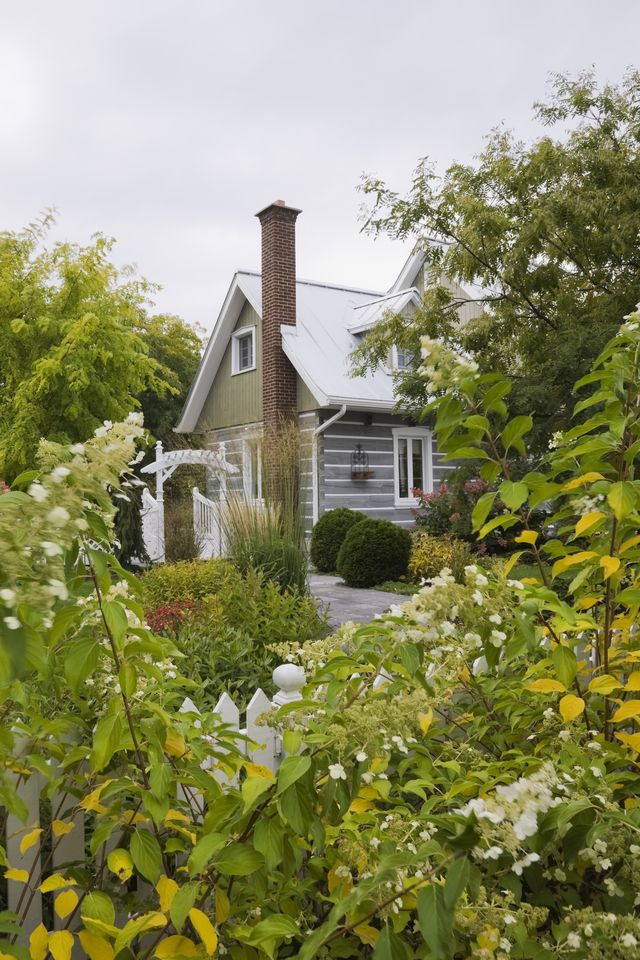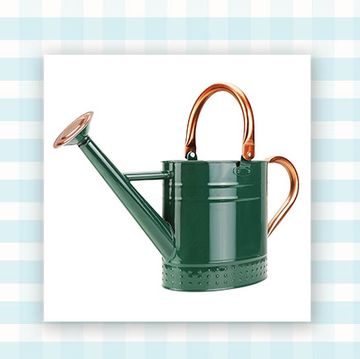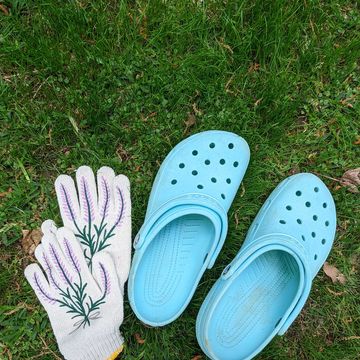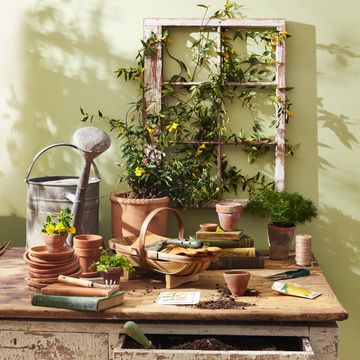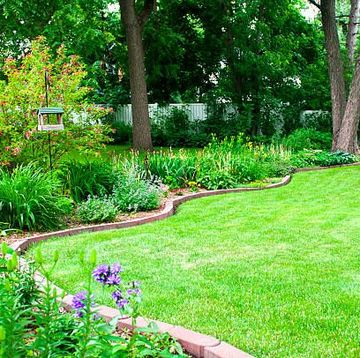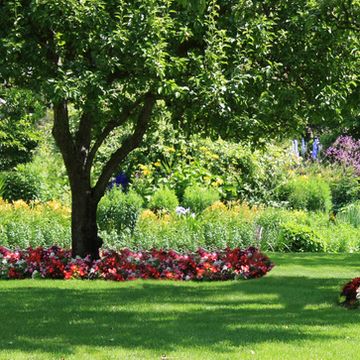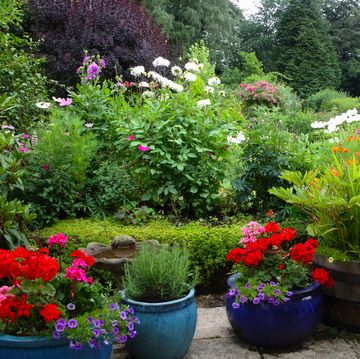1Do your homework.
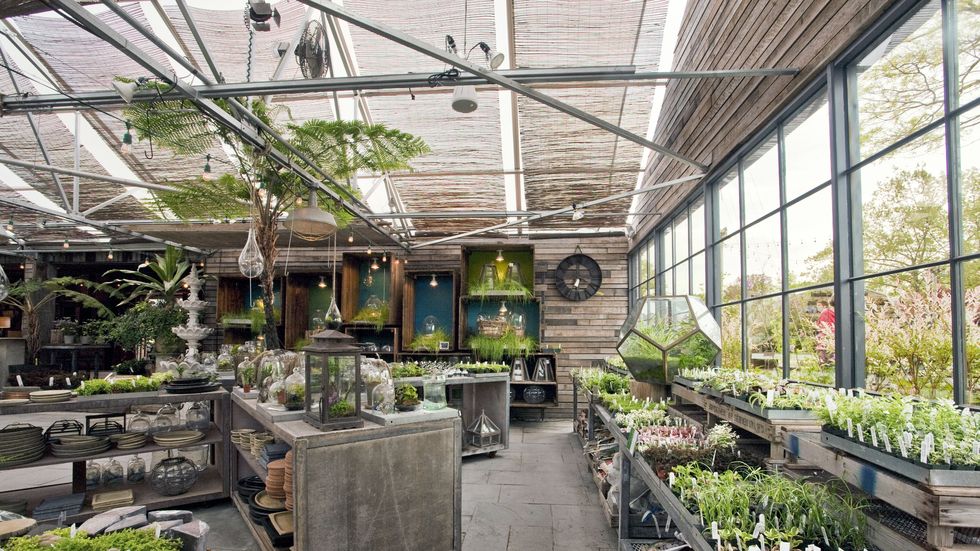 Laura S. Kicey
Laura S. Kicey Before making impulse buys at the garden center, read about your options, says Bryson. Search online for plant names that work well for screening in your USDA planting zone (find your plant hardiness zone here ), or talk to your county extension agent. At the nursery, ask what plants have done well or struggled in recent years in your climate. And, most importantly, read the plant tag. Placing a plant that needs full sun in full shade is a waste of time and money.
2Invest in bigger plants.
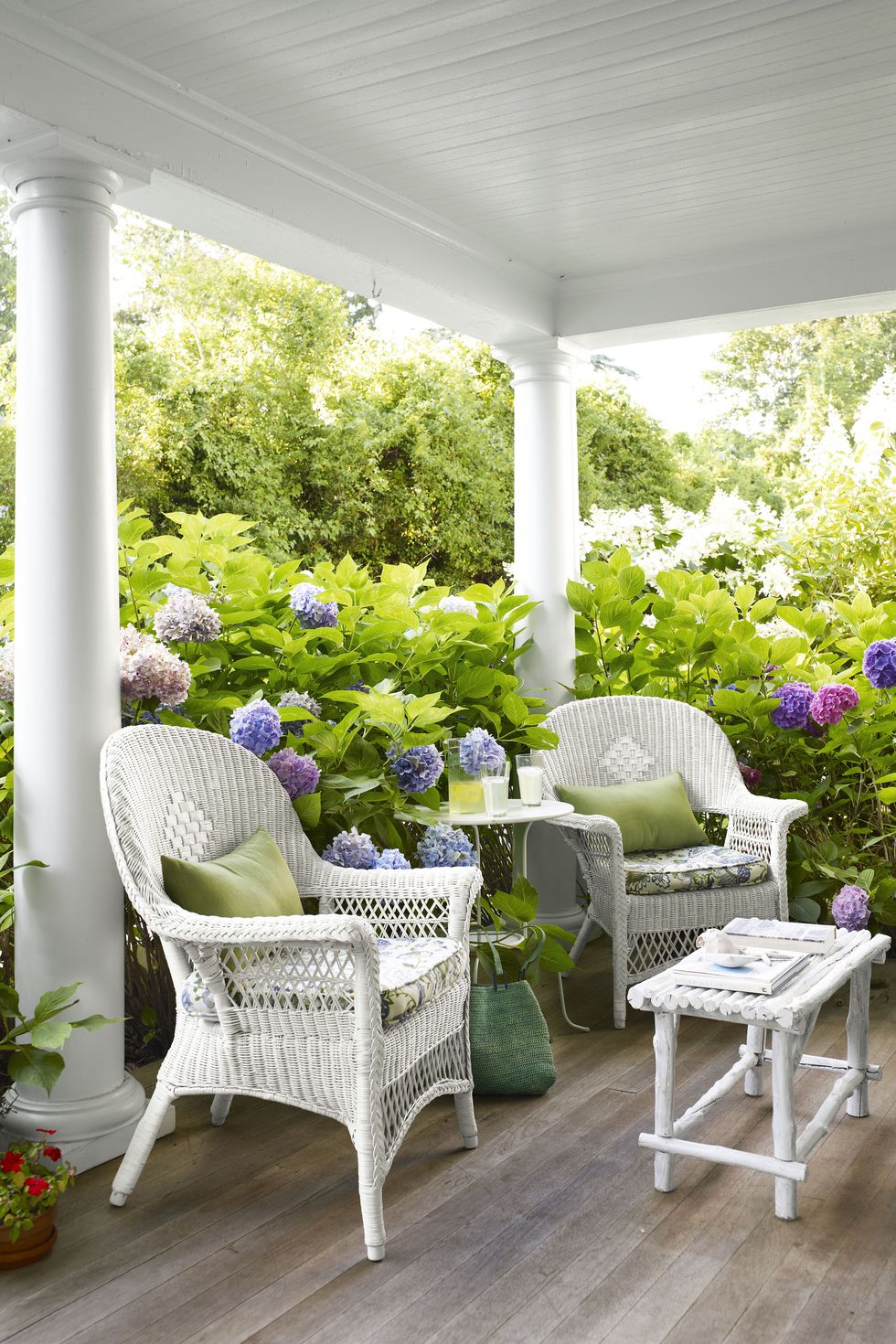 Laura Moss
Laura Moss You found a great deal on gallon container shrubs, but you'll be waiting a long, long time for those little plants to hide anything for you. "When possible, buy fewer plants but go big," says Bryson. "Larger plants make an immediate impact. I'd rather place a single container plant that's five to six feet tall than 20 one-gallon pots that won't provide screening for years."
3Match the plant to the scale.
 Getty Images
Getty ImagesIt's a common mistake: Not thinking about how big a plant is going to get a few years down the road. "Use the right plant for the right place," says landscape architect Dean Hill, ASLA. "If you have a vast open area and want to screen an access road, you can use large evergreens such as spruce or hemlocks. But if you're trying to separate a patio seating area from the kids' playset, you need smaller plants that won't overwhelm the space as they grow and mature."
Advertisement - Continue Reading Below
4Learn to layer.
 Getty Images
Getty ImagesAvoid planting a single type of plant in a line. "You could potentially lose the entire screen in one season if pests or disease attack," says Bryson. Besides, plants don't grow in orderly rows in nature. For a more natural effect, install groupings of plants to create a "thicket." Stagger a few deciduous shrubs, a couple of evergreens, and a cluster of perennial grasses along the property line. "It's more attractive because it adds depth and dimension with different heights, colors and textures," says Bryson.
5Plant precisely.
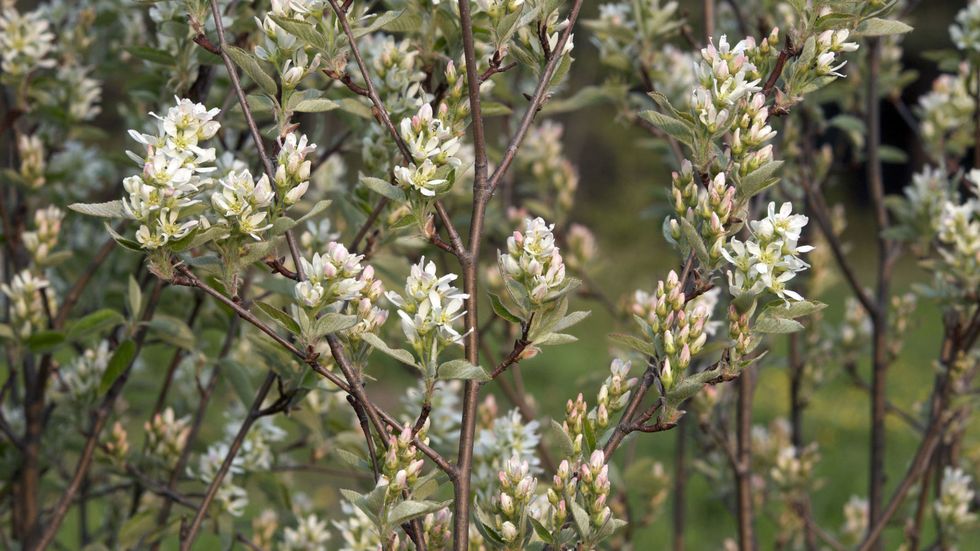 Getty Images
Getty ImagesEven a single tree such as a serviceberry or clumping variety such as a river birch can provide adequate screening in some situations. Pinpoint exactly what you need to hide: Is it the view into your neighbor's messy garage? Or do you want to enjoy your morning coffee out of the sight of passing cars? Before planting, move your plant around—forward, back, left and right—to figure out the spot that provides the best coverage, says Bryson.
6Go vertical.
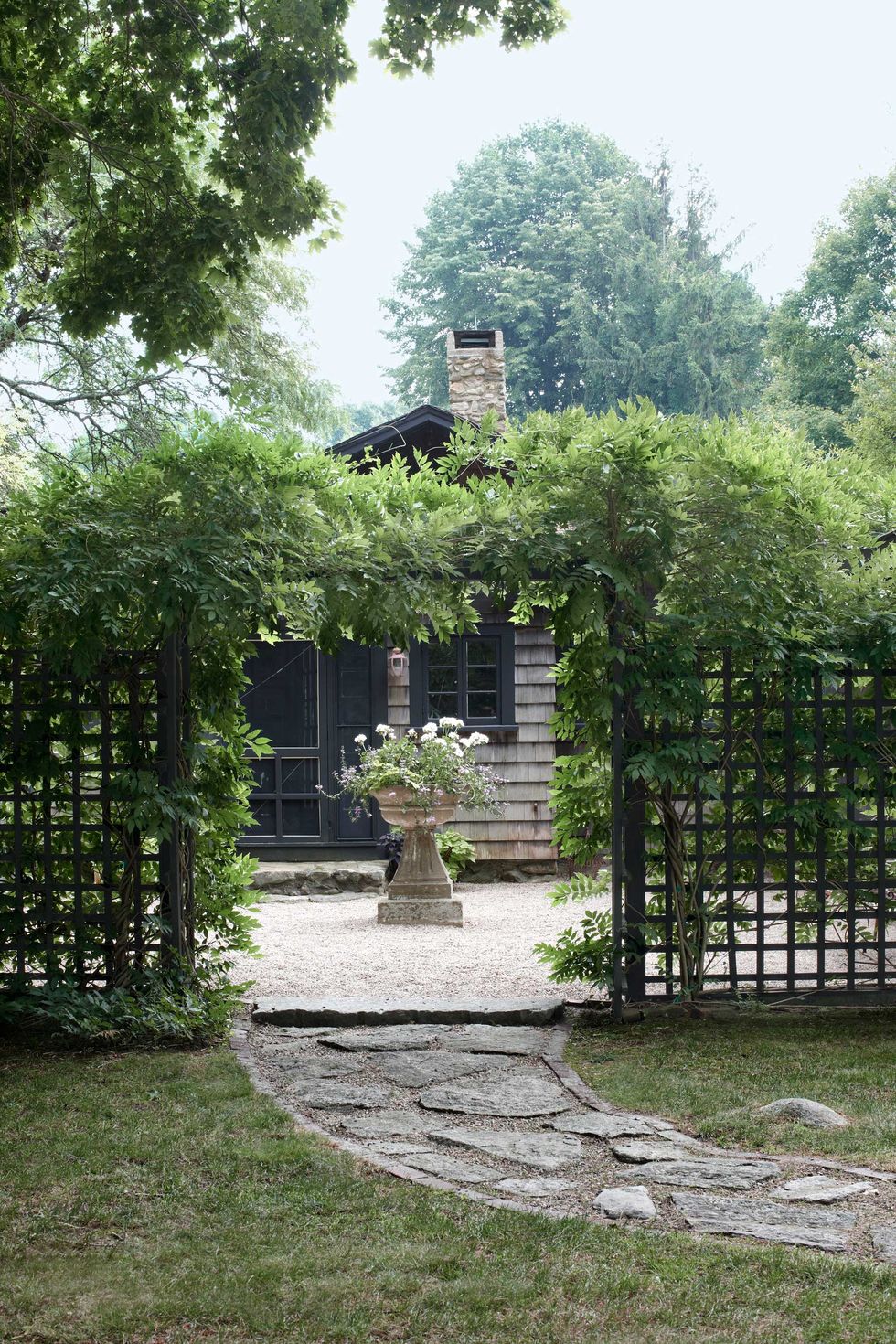 Christopher Baker
Christopher BakerIf your space is limited, consider the use of raised beds or containers to provide height. Or use a climbing plant such as a rose, clematis, or creeping fig. "A vertical trellis with vines or clinging plants can create privacy in small areas," says Hill. "There are lots of options on the market, but you also can DIY something from wood or metal." Plants that naturally grow in a columnar shape, such as yews, junipers or bamboo also work well in tight spaces, says Hill.
Advertisement - Continue Reading Below
7Redirect attention.
Instead of trying to hide an unsightly view, draw the eye away from the area by creating a focal point elsewhere, suggests Bryson. A large ceramic pot overflowing with colorful annuals, a bubbling fountain surrounded by day lilies, or bright blue Adirondack chairs nestled under a tree serve as garden accents that capture your interest and keep your eyes away from the ugly stuff.
8Be realistic about maintenance.
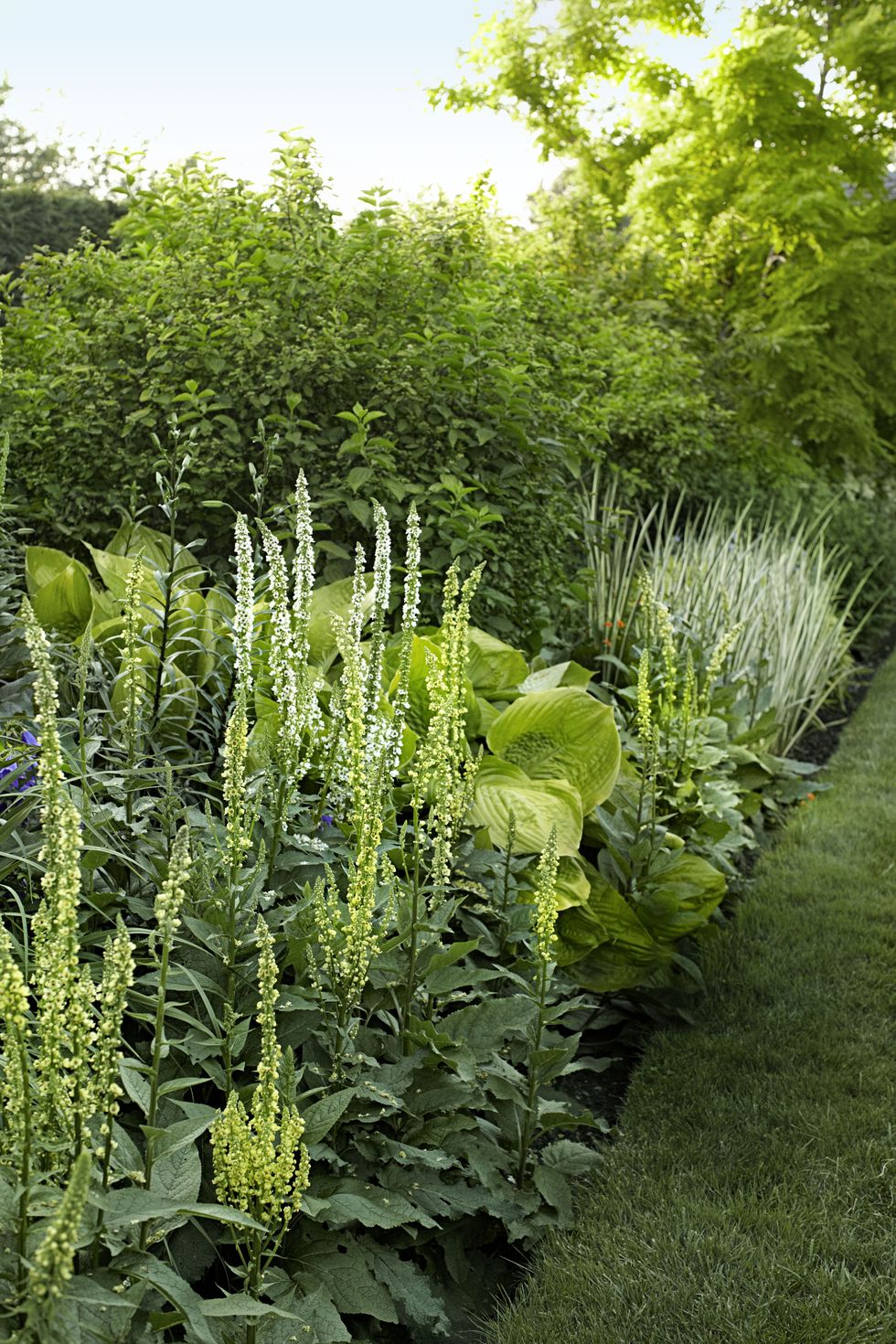 Lisa Hubbard
Lisa Hubbard Think about how much time you want to spend manicuring your plants, says Hill. "I've seen homeowners standing on stepladders trying to prune 15' tall privacy hedges," says Hill. Clipped hedges, such as formal boxwoods, require more effort than a more informal, natural look such as viburnum. Decide how often you really want to spend your weekends with hedge trimmers in hand.
9Know when to get help.
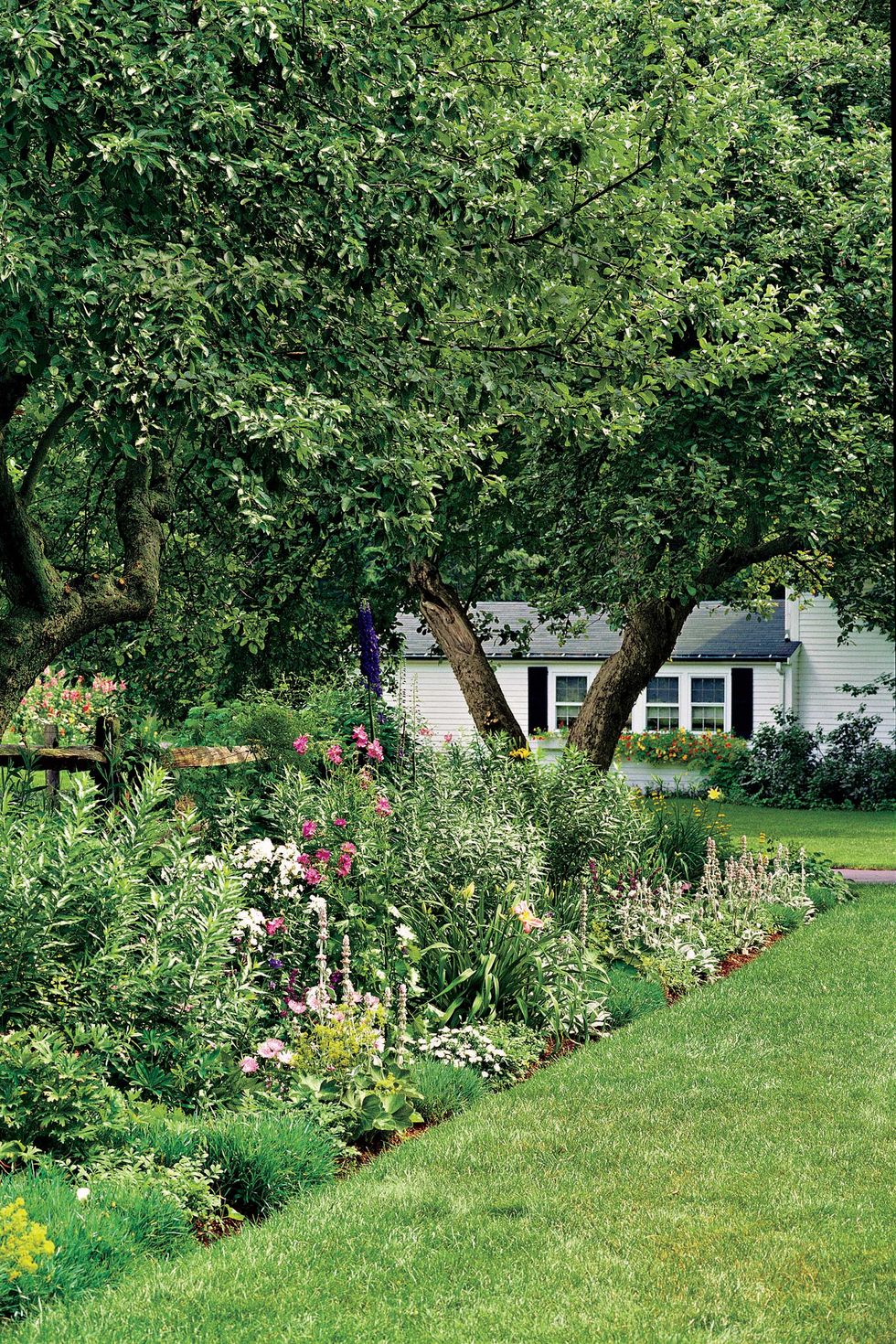 Tom McWilliam
Tom McWilliamIf you just don't know where to start, consider hiring a designer to draw up a master plan for your yard. The designer can install the project in phases or explain how you can do it on your own over time. "A landscape architect, landscape designer or horticulturalist can help plan all your immediate and future landscape needs," says Hill. "A master plan is like the front of a jigsaw puzzle box, which shows you how all the individual pieces will come together to complete the big picture."

Arricca Elin SanSone has written about health and lifestyle topics for Prevention, Country Living, Woman's Day, and more. She’s passionate about gardening, baking, reading, and spending time with the people and dogs she loves.
Advertisement - Continue Reading Below
Advertisement - Continue Reading Below
Advertisement - Continue Reading Below

